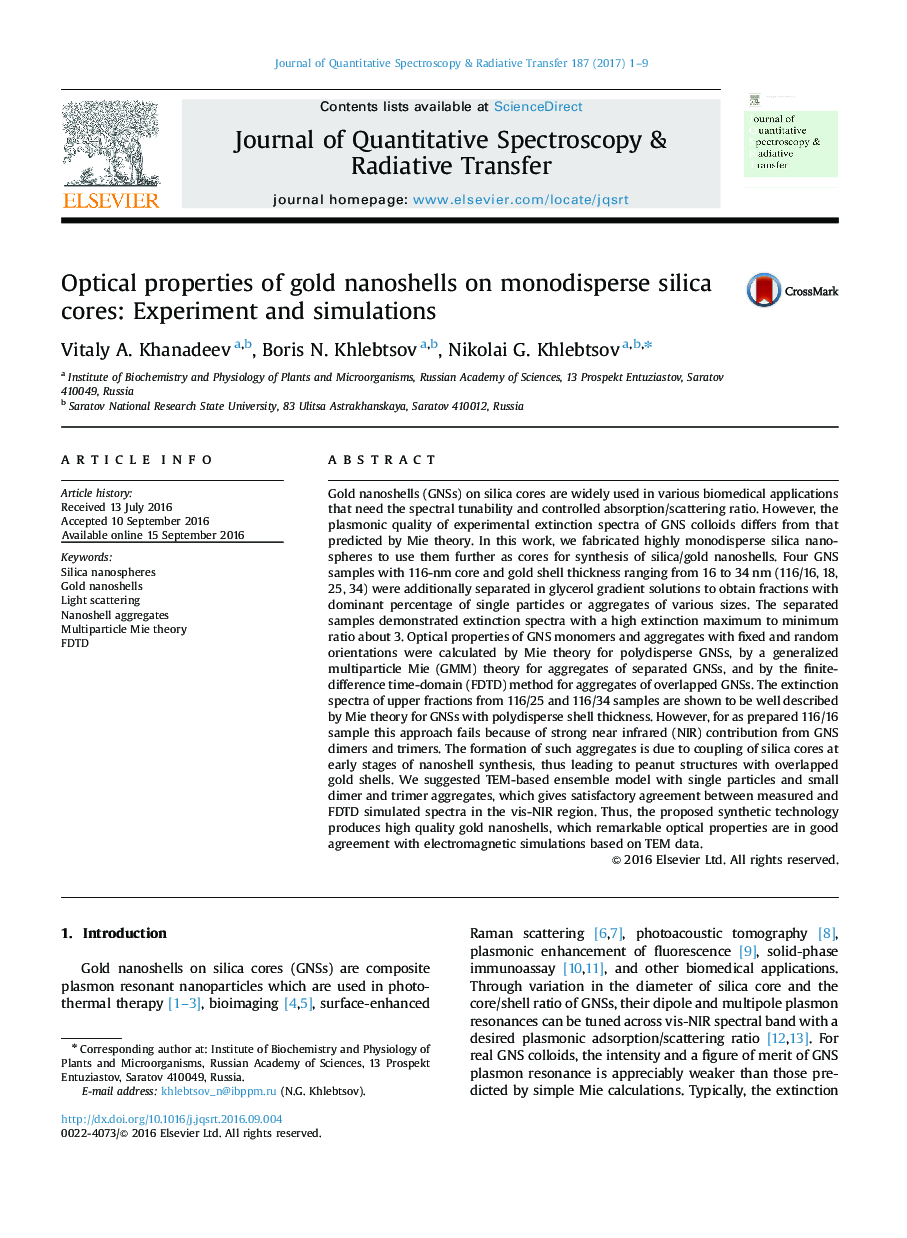| کد مقاله | کد نشریه | سال انتشار | مقاله انگلیسی | نسخه تمام متن |
|---|---|---|---|---|
| 5427427 | 1508628 | 2017 | 9 صفحه PDF | دانلود رایگان |

- Monodisperse silica sphere are fabricated to use as core for gold nanoshell (GNS) synthesis.
- Fabricated GNSs demonstrate remarkable maximum/minimum ratio about 3 for extinction spectra.
- Extinction spectra of separated GNSs agree with Mie theory for polydisperse gold shells.
- GNS dimers and trimers increase the blue-shifted extinction maximum and NIR extinction shoulder.
- TEM-based FDTD model is suggested to describe the extinction spectra of GNS colloids.
Gold nanoshells (GNSs) on silica cores are widely used in various biomedical applications that need the spectral tunability and controlled absorption/scattering ratio. However, the plasmonic quality of experimental extinction spectra of GNS colloids differs from that predicted by Mie theory. In this work, we fabricated highly monodisperse silica nanospheres to use them further as cores for synthesis of silica/gold nanoshells. Four GNS samples with 116-nm core and gold shell thickness ranging from 16 to 34Â nm (116/16, 18, 25, 34) were additionally separated in glycerol gradient solutions to obtain fractions with dominant percentage of single particles or aggregates of various sizes. The separated samples demonstrated extinction spectra with a high extinction maximum to minimum ratio about 3. Optical properties of GNS monomers and aggregates with fixed and random orientations were calculated by Mie theory for polydisperse GNSs, by a generalized multiparticle Mie (GMM) theory for aggregates of separated GNSs, and by the finite-difference time-domain (FDTD) method for aggregates of overlapped GNSs. The extinction spectra of upper fractions from 116/25 and 116/34 samples are shown to be well described by Mie theory for GNSs with polydisperse shell thickness. However, for as prepared 116/16 sample this approach fails because of strong near infrared (NIR) contribution from GNS dimers and trimers. The formation of such aggregates is due to coupling of silica cores at early stages of nanoshell synthesis, thus leading to peanut structures with overlapped gold shells. We suggested TEM-based ensemble model with single particles and small dimer and trimer aggregates, which gives satisfactory agreement between measured and FDTD simulated spectra in the vis-NIR region. Thus, the proposed synthetic technology produces high quality gold nanoshells, which remarkable optical properties are in good agreement with electromagnetic simulations based on TEM data.
Journal: Journal of Quantitative Spectroscopy and Radiative Transfer - Volume 187, January 2017, Pages 1-9